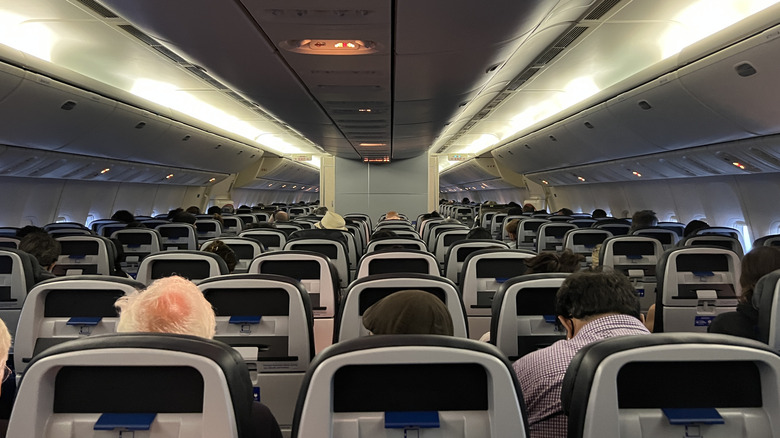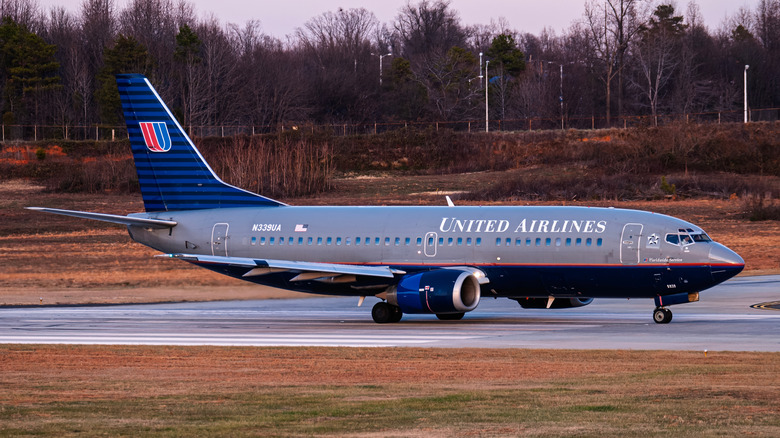This Well-Known Airline Skips Row 13 - Here's Why
Some of us have very strong feelings about the number 13. Many feel it's unlucky and wouldn't schedule an important appointment or a trip on the dreaded Friday the 13th. Others see 13 as a lucky number. Mostly, though, it's the bad connotations that linger, and they show up everywhere, from hotel floors to airplane rows.
Another common fear is aerophobia, which means a fear of flying. Since some passengers are already on high alert while flying, being seated in row 13 could feel extra uncomfortable. As it's paramount for airlines to be accommodating toward their customers, some, like well-known German airline Lufthansa, have entirely removed row 13 from the seating plans of some aircraft. As Lufthansa explained on X: "Next to row 13, we exclude row 17 on our aircraft as well, since the number denotes a strain of bad luck in countries such as Italy and Brazil. This is our way to respect all of our international passengers' cultural beliefs."
Some of the world's other largest airlines, including Qatar Airlines and Air France, also avoid using this row number sometimes. International carriers send aircraft all over the world, and so, as with Lufthansa, omit numbers that are considered unlucky by some.
In the United States, another heavyweight of global aviation, United Airlines, also follows suit. It's one of several U.S. airlines that offer Wi-Fi access, and it also added Braille numbering to its rows, highlighting its drive to cater to as wide a clientele as possible. Beyond that, the company omits row 13 on some planes, as confirmed by the United Airlines chief customer officer, Linda Jojo.
Skipping certain rows can create problems
Some airlines have seating quirks that are unrelated to superstitions. For example, some United Airlines planes are equipped with special United First seats in the first four rows. This can shift the numbering in the rows that follow, as these seats can take up more cabin real estate. You might expect that the airline could simply adjust the numbering accordingly to compensate, thereby not needing to miss rows, but in actuality, it's more complicated than that. Seatguru founder Matt Daimler explained to Airline Reporter that "airlines typically skip numbering as they move from First Class to Coach."
Uniformity is important when it comes to different models of aircraft. There are ways to find out which aircraft you'll be flying on, but plans can change, so airlines need to be ready to reseat passengers across different aircraft layouts. If the row numbering is kept the same across different planes, it's easier to make sure everyone finds their seats.
However, depending on the aircraft and airline, certain rows may or may not be present on each plane. Part of this, as we've seen, is a result of the logistical headache of outfitting an aircraft and preparing flights. The more the numbering differs between comparable models, the greater potential for confusion and delays.

